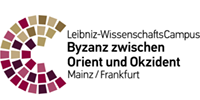The Thracian harbour city Ainos in Roman and Byzantine times - the development of a traffic hub in a changing environment
Landscape and History of Ainos
Ainos (modern name: Enez, province of Edirne, Turkey) was located at the estuary of the River Hebros (Turkish: Meriç, Greek: Evros), which forms the border between Greece and Turkey in modern days. The city hill of Ainos is surrounded by two lagoons to the south and west named Dalyan Gölü and Taşlık Gölü. To the north the River Hebros marks the limit of the settled area. Due to the sediment load of the Hebros and its prograding delta the siltation has led to a westward shift in the shoreline over the millennia; therefore, nowadays the ancient town is located 3-4 km inland. Today the lagoons (showing water depths ~1 m) are separated from the open Aegean Sea by barrier beaches.
In antiquity the topography of the area must have been completely different. It may reasonably be assumed that the city hill of Ainos was located on a peninsula. The shallow lagoons may have provided an opportunity for harbouring ships and protecting them against strong winds and wave action of the open sea. The connection to the hinterland up to Hadrianopolis (modern Edirne) was given by the navigable Hebros. These beneficial conditions led to the establishment of a Greek colony since the 7th century BC onwards creating an important junction in the northern Aegean region. The prosperity of the city in Archaic and Classical times is documented by the finds of imported goods and superregional coinage. In Late Antiquity Ainos hosted a bishop and was the capital of the province of Rhodope. Considerable fortifications and churches dating back to the middle- and late Byzantine times are well preserved.
Current state of research
Excavations conducted by the University of Istanbul have taken place in Enez annually since 1971. The main aims of this research are the investigation of the prominent citadel, the graveyards east of the settlement, a well equipped Roman villa, and the so-called King's Daughter Basilica east of the Taşaltı hill. Some questions dealing with the settled area and the landscape during the centuries are still unsolved, especially the use of the areas adjacent to the lagoons, the ancient course of the Hebros, and the exact position of the former harbours.
Objectives
As an interface between the sea and the hinterland Ainos offers ideal conditions for the research of a hub of merchant shipping from the Roman Empire to the Byzantine period. Among the economic and social development in particular environmental changes caused by the silting-up process played a decisive role in the evolution of the harbour town.
The central questions of the new research project are:
- Localisation and dating of the harbour installations;
- Determination of the spatiotemporal regime of the silting-up process which endangered the existence of the harbour town;
- Analysis of the change in settlement topography caused by the transformation of the landscape;
- Investigating the connections of Ainos with the interregional transport network.
Publications
- W. Rabbel / D. Wilken / T. Wunderlich / St. Bödecker / H. Brückner / J. Byock / C. von Carnap-Bornheim / H. Kennecke / M. Karle / S. Kalmring / S. Messal / Th. Schmidts / M. Seeliger / M. Segschneider / D. Zori, Geophysikalische Prospektion von Hafensituationen – Möglichkeiten, Anwendungen und Forschungsbedarf. In: Th. Schmidts / M. M. Vučetić (Hrsg.), Häfen im 1. Millennium AD. Bauliche Konzepte, herrschaftliche und religiöse Einflüsse. RGZM Tagungen 22. Interdisziplinäre Forschungen zu Häfen von der Römischen Kaiserzeit bis zum Mittelalter 1 (Mainz 2015) 329-340.
- H. Brückner / Th. Schmidts / H. Bücherl / A. Pint / M. Seeliger, Zur Frage der Häfen von Ainos – eine Zwischenbilanz. In: Th. Schmidts / M. Vučetić (Hrsg.), Häfen im 1. Millennium AD. Bauliche Konzepte, herrschaftliche und religiöse Einflüsse. Interdisziplinäre Forschungen zu Häfen von der Römischen Kaiserzeit bis zum Mittelalter 1. RGZM Tagungen 22 (Mainz 2015) 53-76.
- A. Pint / M. Seeliger / D. Hoppe / S. Faas / Th. Schmidts / D. Wilken / T. Wunderlich / S. Başaran / P. Frenzel /H. Brückner, The ancient harbour city of Ainos and its environs – Palaeoenvironmental reconstructions based on sedimentological and microfaunal evidence. – Méditerranée. Journal of Mediterranean Geography (im Druck).
- M. Seeliger/A. Pint/P. Frenzel/P. K. Weisenseel/E. Erkul/D. Wilken/T. Wunderlich/S. Başaran/H. Bücherl/M. Herbrecht/W. Rabbel/Th. Schmidts/N. Szemkus/, Using a Multi-Proxy Approach to Detect and Date a Buried part of the Hellenistic City Wall of Ainos (NW Turkey). Geosciences 2018, 8(10).
- Th. Schmidts, Fortifying Harbour Cities on the Southern Thracian Coast in the Early Byzantine Era – Case Studies on Ainos and Anastasioupolis. In: J. Preiser-Kapeller / F. Daim / T. G. Kolias (Hrsg.), Seasides of Byzantium. Habours and Anchorages of a Mediterranean Empire. BOO 21 (Mainz 2022) 218-232.
- Th. Schmidts, Die Siedlungstopografie des antiken bis frühbyzantinischen Ainos - Schriftquellen und Reiseberichte im Spiegel neuer Forschungsergebnisse. In: Th. Schmidts / I. Triantafillidis (Hrsg.), Mare Thracium. Archaeology and History of Coastal Landscapes and Islands of the Thracian Sea during Antiquity and the Byzantine Era. International Workshop within the Framework of the DFG Project »The Thracian harbour city Ainos in Roman and Byzantine times – the development of a traffic hub in a changing environment«. RGZM-Tagungen 47 (Mainz 2022) 153.168. (https://doi.org/10.11588/propylaeum.1213.c16850)








![[Translate to Englisch:] [Translate to Englisch:]](/fileadmin/_processed_/1/5/csm_Ainos_Enez_Schmidts.Abb.1_bd7fd666ef.jpg)
![[Translate to Englisch:] [Translate to Englisch:]](/fileadmin/_processed_/b/7/csm_Ainos_Enez_Schmidts.Abb.2_e83e7c96b2.jpg)
![[Translate to Englisch:] [Translate to Englisch:]](/fileadmin/_processed_/f/8/csm_Ainos_Enez_Schmidts.Abb.3_af80c4c18d.jpg)
![[Translate to Englisch:] [Translate to Englisch:]](/fileadmin/_processed_/7/0/csm_Ainos_Enez_Schmidts.Abb.4_b04aac1dd5.jpg)
![[Translate to Englisch:] [Translate to Englisch:]](/fileadmin/_processed_/9/3/csm_Ainos_Enez_Schmidts.Abb.5_26398a6aa8.jpg)
![[Translate to Englisch:] [Translate to Englisch:]](/fileadmin/_processed_/a/6/csm_Ainos_Enez_Schmidts.Abb.6_477f7e5a28.jpg)
![[Translate to Englisch:] [Translate to Englisch:]](/fileadmin/_processed_/6/e/csm_Ainos_Enez_Schmidts.Abb.7_283f1893a2.jpg)
![[Translate to Englisch:] [Translate to Englisch:]](/fileadmin/_processed_/a/a/csm_Ainos_Enez_Schmidts.Abb.8_2bc73fd737.jpg)




